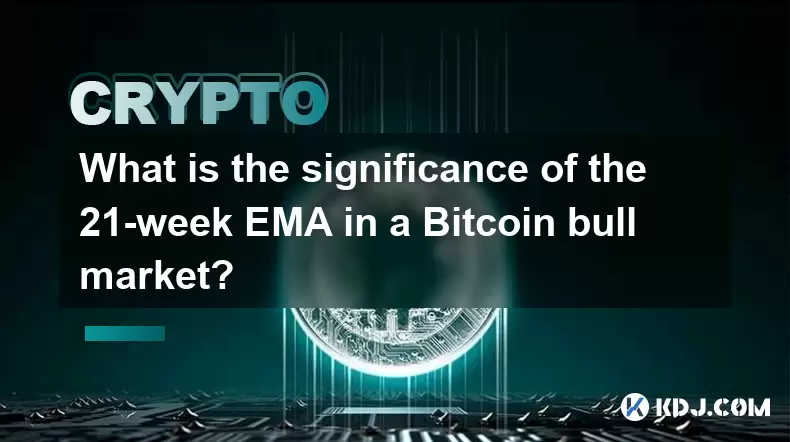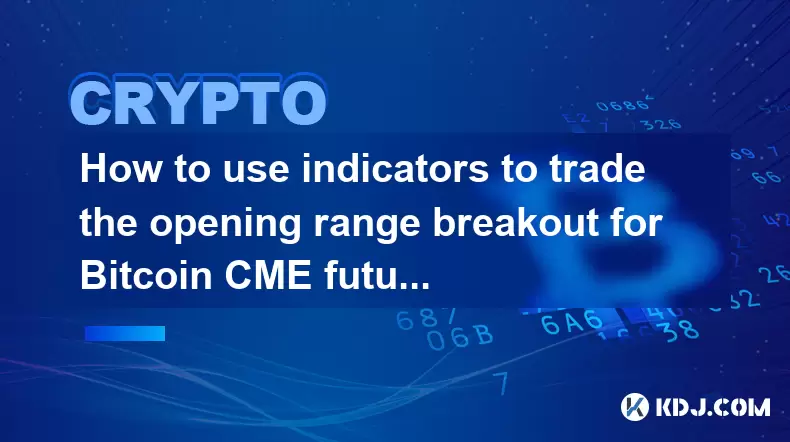-
 Bitcoin
Bitcoin $117900
0.31% -
 Ethereum
Ethereum $3766
0.28% -
 XRP
XRP $3.176
-0.31% -
 Tether USDt
Tether USDt $1.000
0.00% -
 BNB
BNB $795.6
1.51% -
 Solana
Solana $186.8
-1.09% -
 USDC
USDC $0.9999
-0.01% -
 Dogecoin
Dogecoin $0.2353
-1.33% -
 TRON
TRON $0.3226
1.49% -
 Cardano
Cardano $0.8172
-1.08% -
 Sui
Sui $4.178
3.06% -
 Hyperliquid
Hyperliquid $43.05
-3.39% -
 Stellar
Stellar $0.4367
-0.57% -
 Chainlink
Chainlink $18.62
1.47% -
 Hedera
Hedera $0.2828
6.63% -
 Bitcoin Cash
Bitcoin Cash $584.7
5.65% -
 Avalanche
Avalanche $24.81
2.53% -
 Litecoin
Litecoin $112.8
-0.88% -
 UNUS SED LEO
UNUS SED LEO $8.975
-0.08% -
 Shiba Inu
Shiba Inu $0.00001395
-1.07% -
 Toncoin
Toncoin $3.285
-1.05% -
 Ethena USDe
Ethena USDe $1.001
0.01% -
 Polkadot
Polkadot $4.123
0.76% -
 Uniswap
Uniswap $10.49
-0.18% -
 Monero
Monero $326.5
0.14% -
 Dai
Dai $0.9999
-0.02% -
 Bitget Token
Bitget Token $4.576
0.34% -
 Pepe
Pepe $0.00001247
-1.55% -
 Cronos
Cronos $0.1400
3.77% -
 Aave
Aave $295.1
-0.73%
Is Bitcoin really reliable? In-depth analysis of its risks and opportunities
Bitcoin's reliability hinges on its secure blockchain tech, but faces challenges from volatility, regulatory risks, and security threats, balanced by growing institutional adoption.
Jun 07, 2025 at 10:02 am

Bitcoin, the pioneering cryptocurrency, has sparked a revolution in the financial world since its inception in 2009. As it gains mainstream acceptance, a crucial question arises: Is Bitcoin really reliable? To answer this, we must delve into an in-depth analysis of its risks and opportunities, examining various aspects that affect its reliability.
Understanding Bitcoin's Core Technology
Bitcoin operates on a decentralized network using blockchain technology. Blockchain is a distributed ledger that records all transactions across a network of computers. This technology ensures transparency and security, as each block in the chain contains a list of transactions and a reference to the previous block, making it nearly impossible to alter past transactions without consensus from the majority of the network.
The reliability of Bitcoin's technology stems from its cryptographic security and decentralized nature. Cryptographic algorithms protect transactions, and the decentralized network reduces the risk of a single point of failure. However, the complexity of this technology also introduces potential vulnerabilities. For instance, 51% attacks, where a group gains control of the majority of the network's mining power, could theoretically allow them to manipulate transactions.
Market Volatility and Economic Factors
One of the most significant risks associated with Bitcoin is its volatility. The price of Bitcoin can fluctuate dramatically within short periods, influenced by factors such as market sentiment, regulatory news, and macroeconomic trends. For example, announcements of regulatory crackdowns in major economies like China have historically led to sharp declines in Bitcoin's value.
Despite this volatility, Bitcoin also presents substantial opportunities for investors. Its limited supply, capped at 21 million coins, creates a scarcity that can drive up value over time. Moreover, as more institutions and individuals adopt Bitcoin, its price may stabilize and potentially appreciate. The halving events, which occur approximately every four years and reduce the reward for mining new blocks, further contribute to Bitcoin's deflationary nature, potentially increasing its value over time.
Regulatory and Legal Risks
Bitcoin's reliability is also affected by regulatory and legal risks. Different countries have varying stances on cryptocurrencies, ranging from outright bans to embracing them as legal tender. For instance, El Salvador made headlines by adopting Bitcoin as legal tender in 2021, while China has imposed strict regulations against it.
These regulatory differences can impact Bitcoin's adoption and value. Uncertainty in regulatory environments can lead to sudden market movements, as seen when China cracked down on cryptocurrency exchanges in 2017. Investors must stay informed about the regulatory landscape in their jurisdictions and globally, as changes can significantly affect Bitcoin's reliability.
Security and Fraud Risks
While Bitcoin's blockchain is secure, the ecosystem surrounding it is not immune to fraud and security risks. Phishing attacks, where malicious actors attempt to steal users' private keys, and exchange hacks, where centralized platforms are compromised, pose significant threats. The infamous Mt. Gox hack in 2014, where hackers stole around 850,000 Bitcoins, remains a stark reminder of these risks.
To mitigate these risks, users must adopt best practices such as using hardware wallets to store their Bitcoins securely and enabling two-factor authentication on exchanges. Additionally, educating oneself about common scams and staying vigilant can help protect against fraud.
Technological and Scalability Challenges
Bitcoin's reliability is also influenced by technological and scalability challenges. The original Bitcoin protocol has limitations in terms of transaction speed and capacity. Transaction fees can rise during periods of high demand, and confirmation times can be slow, impacting usability.
Efforts to address these challenges include the development of Layer 2 solutions like the Lightning Network, which aims to enable faster and cheaper transactions. However, the adoption and effectiveness of these solutions remain uncertain, adding another layer of risk to Bitcoin's reliability.
Adoption and Institutional Interest
The adoption of Bitcoin by individuals and institutions plays a crucial role in its reliability. As more people and organizations use Bitcoin, its network effect strengthens, potentially leading to greater stability and value. Institutional interest, evidenced by companies like Tesla and Square investing in Bitcoin, signals growing acceptance and could bolster its reliability.
However, widespread adoption also brings challenges. Scalability issues must be addressed to handle increased transaction volumes, and regulatory compliance becomes more critical as more institutions enter the space. The balance between adoption and the ability to manage growth will be key to Bitcoin's long-term reliability.
Frequently Asked Questions
Q: How does Bitcoin's decentralized nature affect its reliability?
A: Bitcoin's decentralized nature enhances its reliability by reducing the risk of a single point of failure. Since no central authority controls the network, it is less vulnerable to manipulation and censorship. However, this also means that resolving issues or implementing changes can be more challenging, as consensus among a diverse group of participants is required.
Q: Can Bitcoin be considered a safe haven asset like gold?
A: While some proponents argue that Bitcoin can serve as a safe haven asset due to its limited supply and independence from traditional financial systems, its high volatility and relatively short history make it less proven in this role compared to gold. Bitcoin's correlation with traditional markets can also fluctuate, adding complexity to its status as a safe haven.
Q: What role do mining pools play in Bitcoin's reliability?
A: Mining pools, groups of miners who combine their computational resources to increase their chances of earning block rewards, play a significant role in Bitcoin's reliability. While they can enhance the efficiency of the mining process, they also concentrate power, raising concerns about potential 51% attacks. The distribution and decentralization of mining power are crucial for maintaining Bitcoin's security and reliability.
Q: How does the environmental impact of Bitcoin mining affect its reliability?
A: Bitcoin mining, which requires significant energy consumption, has raised concerns about its environmental impact. The reliance on fossil fuels in some regions can lead to negative perceptions and potential regulatory backlash, affecting Bitcoin's reliability. However, the shift towards renewable energy sources by some miners could mitigate these concerns and contribute to a more sustainable and reliable future for Bitcoin.
Disclaimer:info@kdj.com
The information provided is not trading advice. kdj.com does not assume any responsibility for any investments made based on the information provided in this article. Cryptocurrencies are highly volatile and it is highly recommended that you invest with caution after thorough research!
If you believe that the content used on this website infringes your copyright, please contact us immediately (info@kdj.com) and we will delete it promptly.
- Bitcoin, Ruvi AI, and CoinMarketCap: Navigating the Future of Crypto
- 2025-07-28 02:30:12
- Dogwifhat (WIF) Eyes Bullish Breakout: Can It Breach $1.20?
- 2025-07-28 02:50:12
- Bitcoin Bounces: How the US-China Tariff Truce Impacts Crypto
- 2025-07-28 02:50:12
- Bitcoin Bull Market: Price Targets and Expert Takes
- 2025-07-28 02:30:12
- Cardano Price Rockets: ADA Jumps Past Resistance, $2 Target in Sight?
- 2025-07-28 01:30:14
- Ruvi AI: The Next Solana? Riding the AI Token Wave on CoinMarketCap
- 2025-07-28 00:50:16
Related knowledge

What is the significance of the 21-week EMA in a Bitcoin bull market?
Jul 10,2025 at 06:56pm
Understanding the 21-Week EMA in Cryptocurrency AnalysisThe 21-week Exponential Moving Average (EMA) is a technical indicator widely used by traders a...

How to identify a volatility contraction pattern on Bitcoin using indicators?
Jul 07,2025 at 07:28am
What is a Volatility Contraction Pattern in Bitcoin Trading?A volatility contraction pattern refers to a phase where the price movement of an asset, s...

Do indicators work better on a logarithmic or linear scale for Bitcoin's long-term chart?
Jul 08,2025 at 01:42pm
Understanding Chart Scales in Cryptocurrency TradingIn cryptocurrency trading, particularly for analyzing Bitcoin's long-term trends, chart scales pla...

What is the Woodies CCI indicator and can it be used for Bitcoin?
Jul 04,2025 at 05:14pm
Understanding the Woodies CCI IndicatorThe Woodies CCI indicator is a variation of the traditional Commodity Channel Index (CCI), which was originally...

How to use indicators to trade the opening range breakout for Bitcoin CME futures?
Jul 05,2025 at 07:35pm
What Is the Opening Range Breakout Strategy?The opening range breakout (ORB) strategy is a popular trading technique used in both traditional markets ...

How to use the Relative Vigor Index (RVI) for Bitcoin trading?
Jul 07,2025 at 02:00pm
Understanding the Relative Vigor Index (RVI)The Relative Vigor Index (RVI) is a technical analysis tool used to assess the strength of price movements...

What is the significance of the 21-week EMA in a Bitcoin bull market?
Jul 10,2025 at 06:56pm
Understanding the 21-Week EMA in Cryptocurrency AnalysisThe 21-week Exponential Moving Average (EMA) is a technical indicator widely used by traders a...

How to identify a volatility contraction pattern on Bitcoin using indicators?
Jul 07,2025 at 07:28am
What is a Volatility Contraction Pattern in Bitcoin Trading?A volatility contraction pattern refers to a phase where the price movement of an asset, s...

Do indicators work better on a logarithmic or linear scale for Bitcoin's long-term chart?
Jul 08,2025 at 01:42pm
Understanding Chart Scales in Cryptocurrency TradingIn cryptocurrency trading, particularly for analyzing Bitcoin's long-term trends, chart scales pla...

What is the Woodies CCI indicator and can it be used for Bitcoin?
Jul 04,2025 at 05:14pm
Understanding the Woodies CCI IndicatorThe Woodies CCI indicator is a variation of the traditional Commodity Channel Index (CCI), which was originally...

How to use indicators to trade the opening range breakout for Bitcoin CME futures?
Jul 05,2025 at 07:35pm
What Is the Opening Range Breakout Strategy?The opening range breakout (ORB) strategy is a popular trading technique used in both traditional markets ...

How to use the Relative Vigor Index (RVI) for Bitcoin trading?
Jul 07,2025 at 02:00pm
Understanding the Relative Vigor Index (RVI)The Relative Vigor Index (RVI) is a technical analysis tool used to assess the strength of price movements...
See all articles

























































































